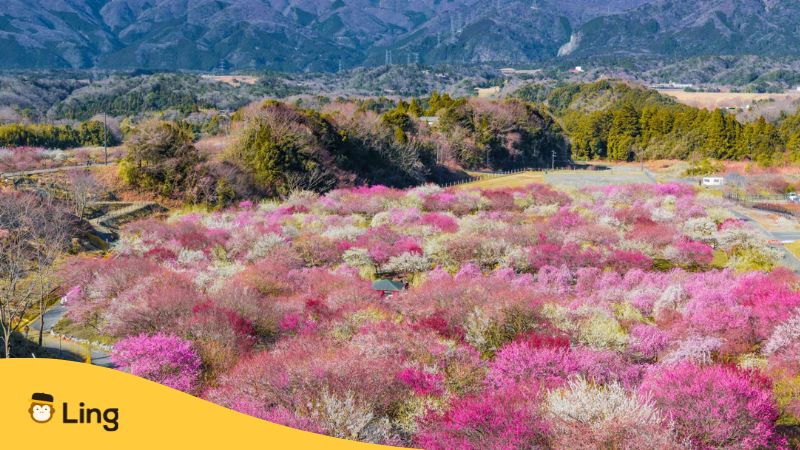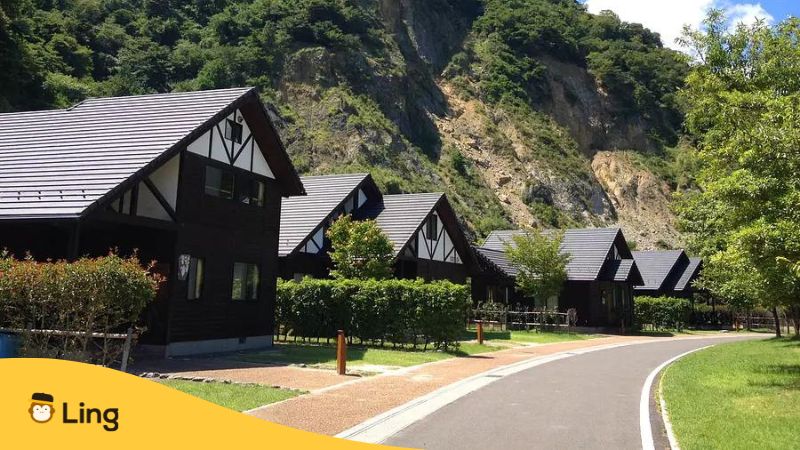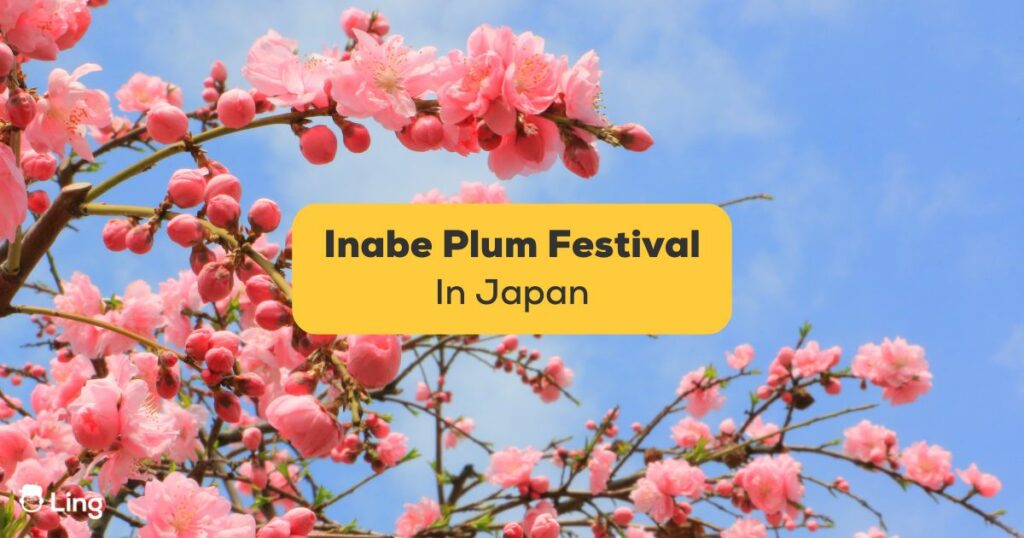Seeing pink cherry blossom trees in Japan is a dream of every traveler! What if I tell you that you can see similar pink blossoms before it’s peak season? I’m talking about the Inabe Plum Festival!
Normally, the time for Japanese cherry blossoms is from April to Early May, which is also Japan’s peak tourist season. If you’re visiting Japan in March and feel disappointed because you won’t see any cherry blossoms, you are wrong! Yes, you won’t see “cherry” blossoms, but you can see plum blossoms as beautiful as them! To see the pinkest place in Japan, visit the Inabe Plum Festival!
Table of Contents:
- Quick Information For Visitors
- What Is Inabe Plum Festival?
- Why Should You Join The Inabe Plum Festival?
- When Is The Inabe Plum Festival 2024?
- Where Is The Inabe Plum Festival?
- How To Get There?
- Other Must-See Places In Inabe City
- Useful Japanese Phrases You May Need
- Final Words
Quick Information For Visitors
Here is quick information about the Inabe Plum Festival for those on the go:
- Date: From February 23 to March 20
- Hours: 9:00 AM – 4:00 PM
- Entrance Fee: 500 Yen ($3.30)
- Location: Inabe City Bairin Park
What Is Inabe Plum Festival?
The annual Inabe Plum Festival (いなべ梅まつり- Inabe Ume Matsuri) takes place at Inabe Plum Grove on the Suzuka mountain range. You can enjoy the amazing view of pink and white plum blooms and take a walk in the plum grove with a great mountain view. There are more than 4,000 plum trees in an 80,000-square-meter space!
During the plum blossom festival, various organic plum products such as plum jam, plum juice, and plum extract are also sold in the stalls.
The Inabe City Agricultural Park (いなべ市農業公園 – Ina be ichi nōgyō kōen), which is home to the Inabe Plum Festival, has a meaningful history that I want to share with you.
The agricultural park was created thanks to the hard work of local senior citizens of Inabe. The elder residents of Inabe came up with a project that benefits both the city industry and the life of the elderly. The mission of their project was to transform a neglected farmland into an agricultural park.
This project started in 1999, but only five people volunteered to work on it; however, that didn’t stop them. They got to work, cutting the grass, maintaining the soil, moving stones away, and planting many plum trees. After years, they were proud to see the plum trees grow taller and blossom.

Why Should You Join The Inabe Plum Festival?
In spring, many Japanese people come to Inabe from surrounding cities to enjoy the beautiful view of plum blossoms. Since the park is one of the largest in the city, it has many spots to take photos. You can see visitors walking around with their vlog cameras or smartphones to record the scenery. If you’re obsessed with taking nature pictures, this is the place for you!
There is an observation deck inside the park which is the perfect spot for a panoramic landscape photo. The view from above is just breathtaking! You’ll see a land covered with different shades of pink, like a fluffy blanket. The deck is usually crowded with people trying to get the perfect photo, so it would be better if you visited it in the morning hours.
After you get off the deck, take a stroll on the path bordered by pink plum tree branches, observe the blossoms closer, and pick your favorite. What’s more, pets are welcome here, provided they wear a leash!
When Is The Inabe Plum Festival 2024?
The joyous Inabe Plum Festival takes place from late February to late March. This year, you can visit the festival from February 23 to March 20, 2024.
Where Is The Inabe Plum Festival?
The festival takes place in the Inabe City Agricultural Park, which is located in Inabe City, Northern Mie prefecture.
How To Get There
Reaching Inabe City Agricultural Park takes about 1 hour by car from Nagoya and about 2 hours from Osaka.
Access by car:
- 25 minutes from Tokai Kanjo Expressway “Daian IC”
- 30 minutes from Meishin Expressway “Sekigahara IC”
- 50 minutes from Higashi-Meihan Expressway “Kuwana IC”
Access by taxi:
- 20 minutes by taxi from Ageki Station

Other Must-See Places In Inabe City
While you’re there, why don’t you enrich your trip to Inabe City by seeing its famous places? If you want to learn more about them, here’s an Inabe travel brochure issued by the city. Some of them are:
- Danish Style Glamping Area
- Streets of Ageki
- Aogawakyo Camping Park
- Retro Sangi Railway
- Meikokusan Shoboji Temple
Useful Japanese Phrases You May Need
Since you’re a foreign visitor, here are some Japanese phrases that may come in handy:
| English | Japanese | Romaji |
|---|---|---|
| Inabe Plum Festival | いなべ梅まつり | Inabe Ume Matsuri |
| Plum | 梅 | Ume |
| Food stalls | 屋台 | Yatai |
| Crafts fair | 工芸品フェア | Kōgeihin fea |
| Family-friendly activities | 家族向けのアクティビティ | Kazoku muke no akutibiti |
| Local products | 地元産品 | Jimoto sanpin |
| Picnic area | ピクニックエリア | Pikunikku eria |
| One ticket, please. | チケットを一枚、お願いします | Chiketto o ichimai, onegaishimasu. |
| Excuse me, where is this? | すみません、これはどこですか? | Sumimasen, kore wa doko desu ka? |
| Thank you very much. | ありがとうございます | Arigatou gozaimasu |
| It’s delicious. | おいしいです | Oishii desu |
| What is this? | これはなんですか? | Kore wa nan desu ka? |
| How much is it? | いくらですか? | Ikura desu ka? |
| Do you speak English? | 英語が話せますか? | Eigo ga hanasemasu ka? |
| Where is the restroom? | トイレはどこですか? | Toire wa doko desu ka? |
| Are there plum blossoms at this location? | この場所には梅がありますか? | Kono basho ni wa ume ga arimasu ka? |
| What kind of fruit is this? | この果物は何ですか? | Kono kudamono wa nani desu ka? |
| Please take a picture of me here. | この写真を撮ってください | Kono shashin o totte kudasai |
| Can this be a souvenir? | これはおみやげになりますか? | Kore wa omiyage ni narimasu ka? |
| Where can I buy souvenirs? | どこでおみやげを買うことができますか? | Doko de omiyage o kau koto ga dekimasu ka? |
If you want to learn Japanese to communicate fluently with native speakers, try out the Ling app! It doesn’t matter if you are a newbie or have experience learning Japanese, you can easily adapt Ling to your learning plan. All you have to do is download the Ling app from the App Store or Play Store and start your free trial!
Final Words
If you’re visiting Japan in February or March, don’t feel down because you’ll miss the cherry blossoms; you can view plum blossoms instead! The Inabe Plum Festival features thousands of plum trees (梅 – ume) blooming pink way earlier than cherry trees (桜 – sakura).
Other Japanese festivals such as Ninnaji Flower Festival and Himeji Yukata Festival may also interest you! Let’s meet in the next blog post; see you (またね! – mata ne)!


































































